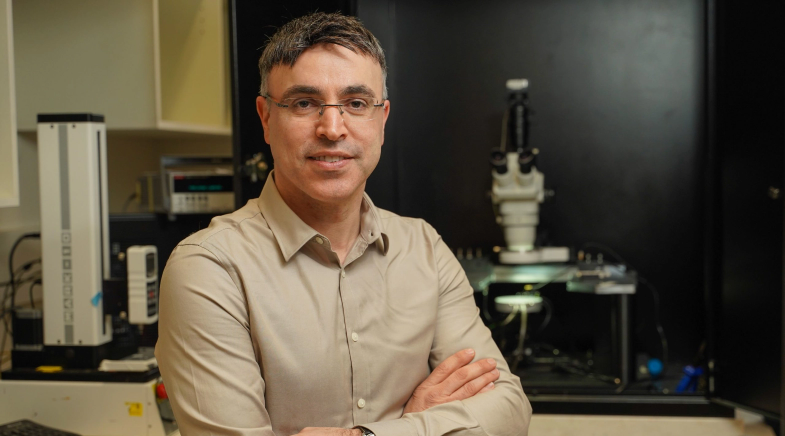These fabulous ferromagnets can take heat!
-
- from Shaastra :: vol 02 issue 02 :: Mar - Apr 2023

A class of devices that integrates electrical and mechanical functions at nanoscale is the next major step in miniaturisation. Called nanoelectromechanical systems (NEMS), these extremely tiny systems work at the intersection of physics and chemistry, and are believed to have many potential applications, including as biomedical devices and sensors.
With the discovery of graphene in 2004, there has been a rush to study different physical, chemical and electrical properties of two-dimensional materials with atomic-scale thickness. Magnetic properties in such 2D materials took a long time to discover, but in 2017 scientists were able to synthesise some with ferromagnetic properties. However, such ferromagnetic materials suffered from a major drawback: they had a very low (less than –200°C) Curie temperature, at which the materials lose their magnetic property, making them practically useless.
Now, a team of Chinese and Indian researchers has synthesised a 2D material that retains ferromagnetism up to 100°C.
"Solid magnets like iron have been known of for centuries," says Awadhesh Narayan, Assistant Professor at the Solid State and Structural Chemistry Unit in the Indian Institute of Science, Bengaluru. "In recent years, scientists started looking at magnets that can be exfoliated layer by layer so that you have thin sheets of magnets," says Narayan, a co-author of the study published in Nature Electronics (go.nature.com/3Txd6oU) in March.
The material essentially has layers of iron, germanium and tellurium stuck together, says Narayan. While iron provides the magnetic core, germanium and tellurium stabilise the 2D structure. There is a net-like arrangement of iron with germanium and iron with tellurium, he explains.
Scientists were able to build inductors whose performance can match that of any three-dimensional material.
The team – led by Faxian Xiu, Professor of Physics at Fudan University in Shanghai, China – synthesised the ferromagnetic material; Narayan's team helped them comprehend the theoretical basis for a rise in Curie temperature from first principles. "There was a remarkable agreement between what we calculated and what they measured," Narayan says. It's very exciting that they made the material, he adds.
Moreover, the scientists were able to build inductors whose performance can match that of any three-dimensional material. Using this, they fabricated low-pass filters, which are an important component of electric circuits that block frequencies of current or voltage beyond a certain range. Such filters are required in biomedical applications, where noise needs to be eliminated.
"The two-dimensional ferromagnetic thin films explored in this work present an excellent example of the rich potential existing at the interface of 2D materials and magnetism," says Kabeer Jasuja, Associate Professor of Chemical Engineering at the Indian Institute of Technology Gandhinagar, who specialises in studying nanosheets. "NEMS devices are on the path towards commercialisation. And the work done by these authors is a forward-looking step in this direction," remarks Jasuja.
Have a
story idea?
Tell us.
Do you have a recent research paper or an idea for a science/technology-themed article that you'd like to tell us about?
GET IN TOUCH














